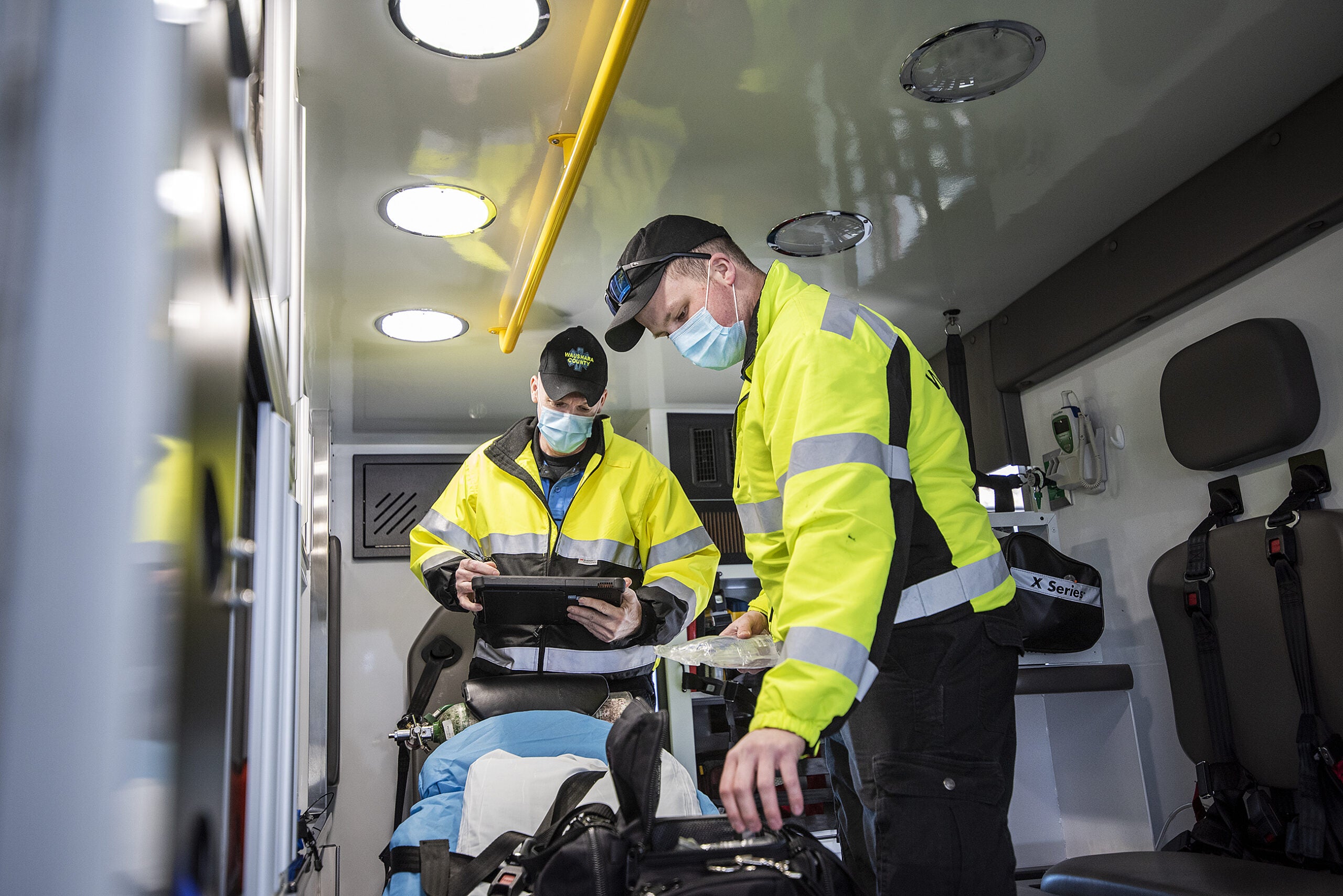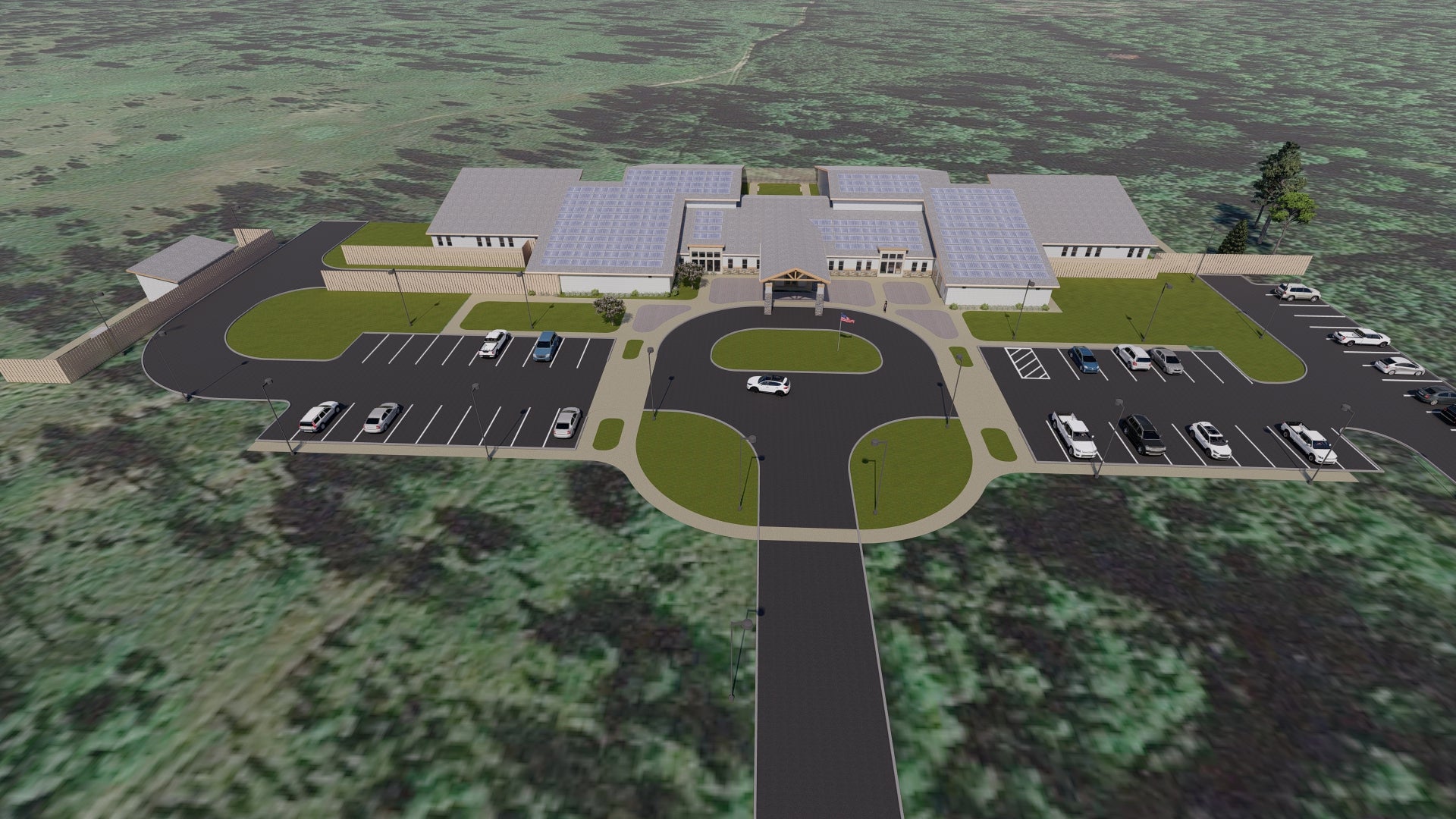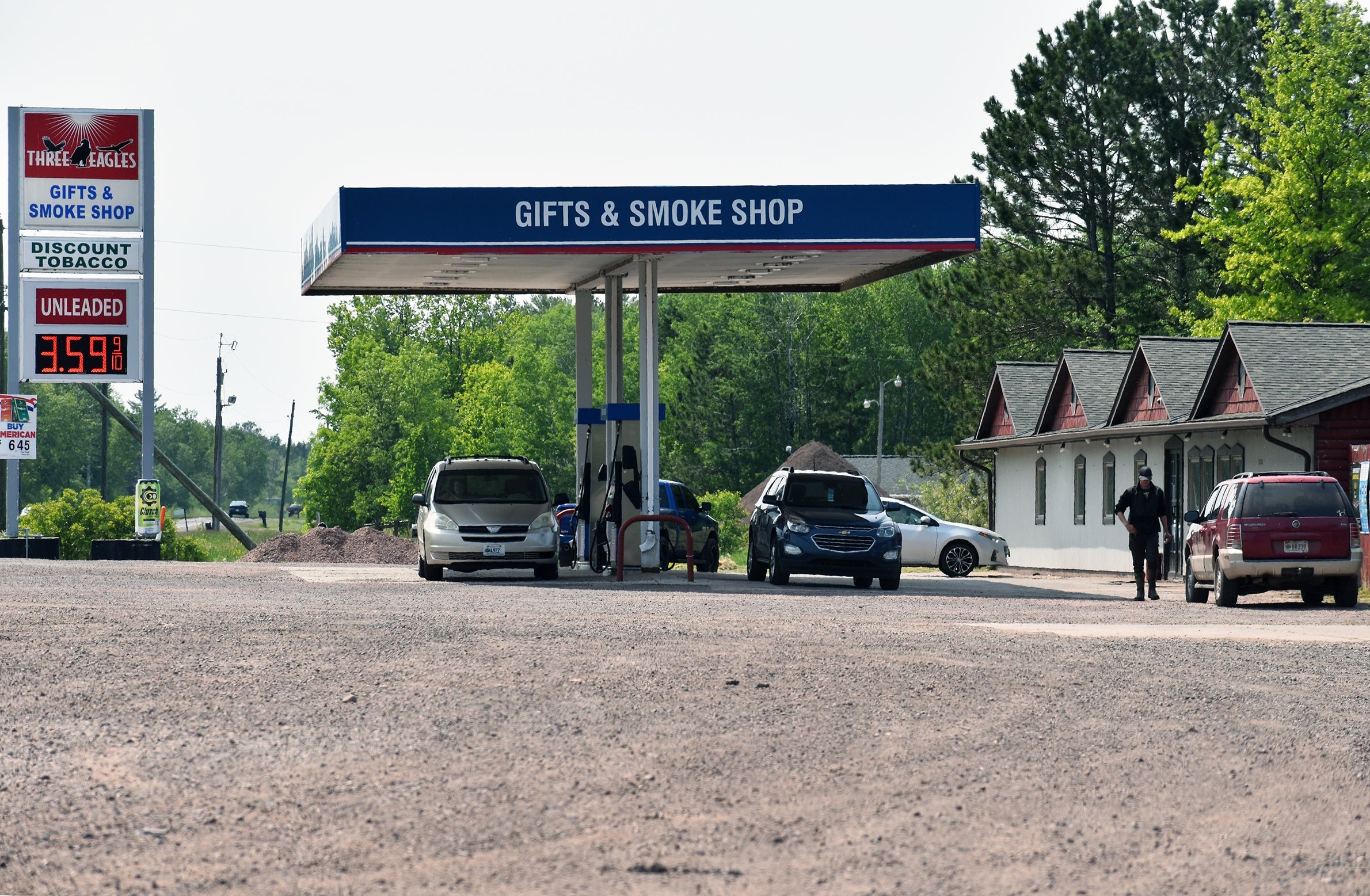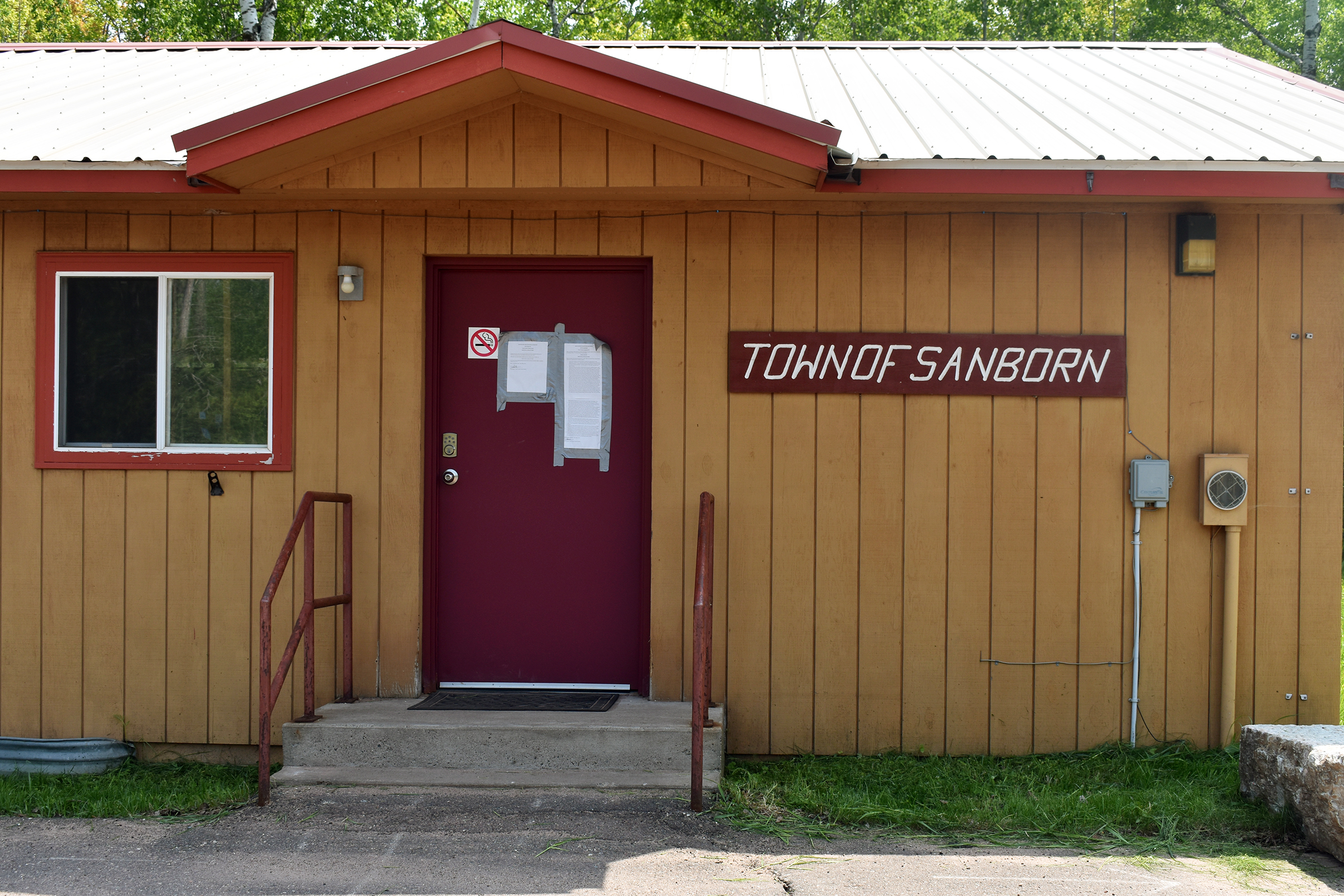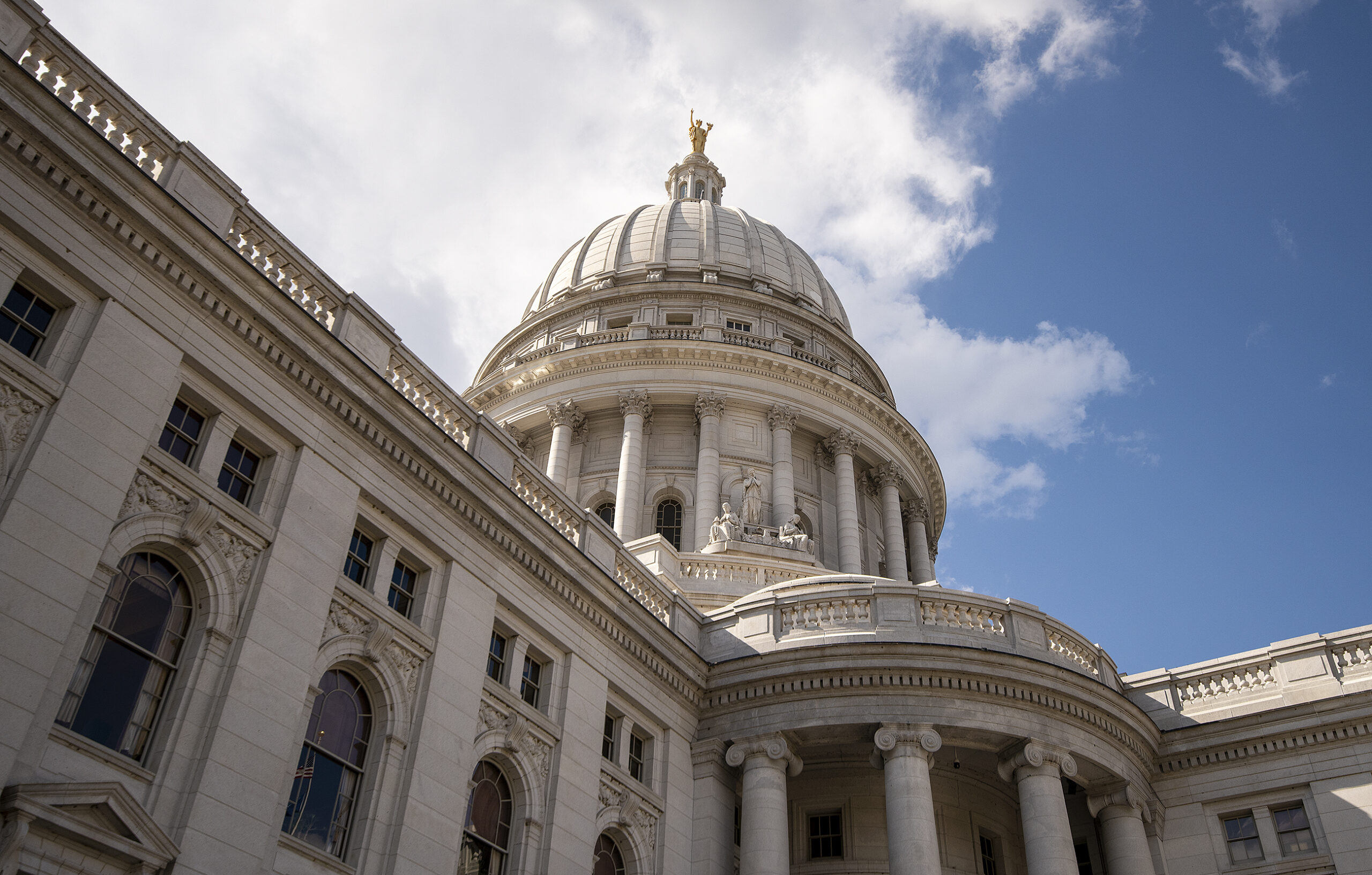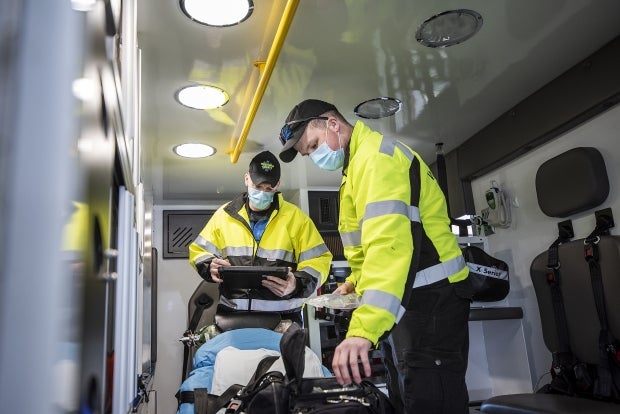Bud Rubeck never saw him coming.
It was late one night four years ago. Rubeck and his wife Julie had gone over to a neighbor’s house in Clam Lake to try to smooth things over between a couple who had been fighting. Instead, the man blindsided him, punching Rubeck on the left side of his head. He fell and hit the ground hard.
“When the ambulance service got here, had we not had critical care paramedics, I would have been dead,” said Rubeck, now 68.
News with a little more humanity
WPR’s “Wisconsin Today” newsletter keeps you connected to the state you love without feeling overwhelmed. No paywall. No agenda. No corporate filter.
[[{“fid”:”1449216″,”view_mode”:”embed_portrait”,”fields”:{“alt”:”Bud Rubeck Happy To Be Alive”,”title”:”Bud Rubeck Happy To Be Alive”,”class”:”media-element file-embed-portrait media-wysiwyg-align-right”,”data-delta”:”10″,”format”:”embed_portrait”,”alignment”:”right”,”field_image_caption[und][0][value]”:”%3Cp%3EBud%20Rubeck%20is%20happy%20to%20be%20alive%20after%20he%20suffered%20a%20severe%20head%20injury%20in%20Oct.%202016%20that%20left%20him%20on%20life%20support%20for%20several%20days.%26nbsp%3B%3Cem%3EPhoto%20courtesy%20of%26nbsp%3BChris%20Frasch%3C%2Fem%3E%3C%2Fp%3E%0A”,”field_image_caption[und][0][format]”:”full_html”,”field_file_image_alt_text[und][0][value]”:”Bud Rubeck Happy To Be Alive”,”field_file_image_title_text[und][0][value]”:”Bud Rubeck Happy To Be Alive”},”type”:”media”,”field_deltas”:{“10”:{“alt”:”Bud Rubeck Happy To Be Alive”,”title”:”Bud Rubeck Happy To Be Alive”,”class”:”media-element file-embed-portrait media-wysiwyg-align-right”,”data-delta”:”10″,”format”:”embed_portrait”,”alignment”:”right”,”field_image_caption[und][0][value]”:”%3Cp%3EBud%20Rubeck%20is%20happy%20to%20be%20alive%20after%20he%20suffered%20a%20severe%20head%20injury%20in%20Oct.%202016%20that%20left%20him%20on%20life%20support%20for%20several%20days.%26nbsp%3B%3Cem%3EPhoto%20courtesy%20of%26nbsp%3BChris%20Frasch%3C%2Fem%3E%3C%2Fp%3E%0A”,”field_image_caption[und][0][format]”:”full_html”,”field_file_image_alt_text[und][0][value]”:”Bud Rubeck Happy To Be Alive”,”field_file_image_title_text[und][0][value]”:”Bud Rubeck Happy To Be Alive”}},”link_text”:false,”attributes”:{“alt”:”Bud Rubeck Happy To Be Alive”,”title”:”Bud Rubeck Happy To Be Alive”,”class”:”media-element file-embed-portrait media-wysiwyg-align-right”,”data-delta”:”10″}}]]Great Divide Ambulance Service in Cable was there to respond when Rubeck’s life hung in the balance. He had bleeding in the brain and couldn’t breathe on his own. Paramedics took him to Cable, where they were met by a helicopter. They flew him to a hospital in Duluth, where he spent 10 days in an intensive care unit and several days on life support. He was in the hospital for about a month and had to learn to walk all over again.
Today, if someone in Clam Lake dials 911, there’s no guarantee anyone will answer.
“We’re on our own,” said Rubeck.
Clam Lake is one of several communities in Ashland County that lost its ambulance service at the beginning of this year. In Wisconsin, towns are mandated to provide emergency services unless it’s provided elsewhere, or they contract with another provider. But in rural communities, long drives, lack of volunteers and inadequate funding have left some places struggling to provide ambulance services to residents.
Great Divide notified six towns last summer that it would end its five-year contracts with them at the end of last year. Three of the towns were able to obtain emergency services from local fire departments. But the towns of Gordon, Shanagolden and Marengo haven’t yet been able to find another provider or get their own service up and running. That means those towns lack a regular emergency medical services (EMS) provider.
Great Divide still answers calls within the towns when they’re able, according to Rob Puls, advanced life support coordinator for Great Divide. But he said Great Divide decided not to renew its contracts with the towns as the responder has struggled to cover shifts and to manage overtime costs and other mounting expenses. Treating people over longer distances also means the ambulance service provider goes through more medications and supplies.
But Puls said the greatest challenge is finding people to work, even though Great Divide pays an annual wage that’s over a third higher than the average household income in Ashland County.
“It’s become increasingly difficult for us to find people to work over there. The workforce for EMS is not really good right now, and a lot of services are understaffed,” said Puls. “Given the pandemic situation, it’s kind of deterred people from going into this field to be a first responder.”
Yet the staff shortage existed long before the COVID-19 pandemic. While Great Divide pays paramedics to respond in emergencies, many ambulance agencies and fire departments rely on the good will of their neighbors.
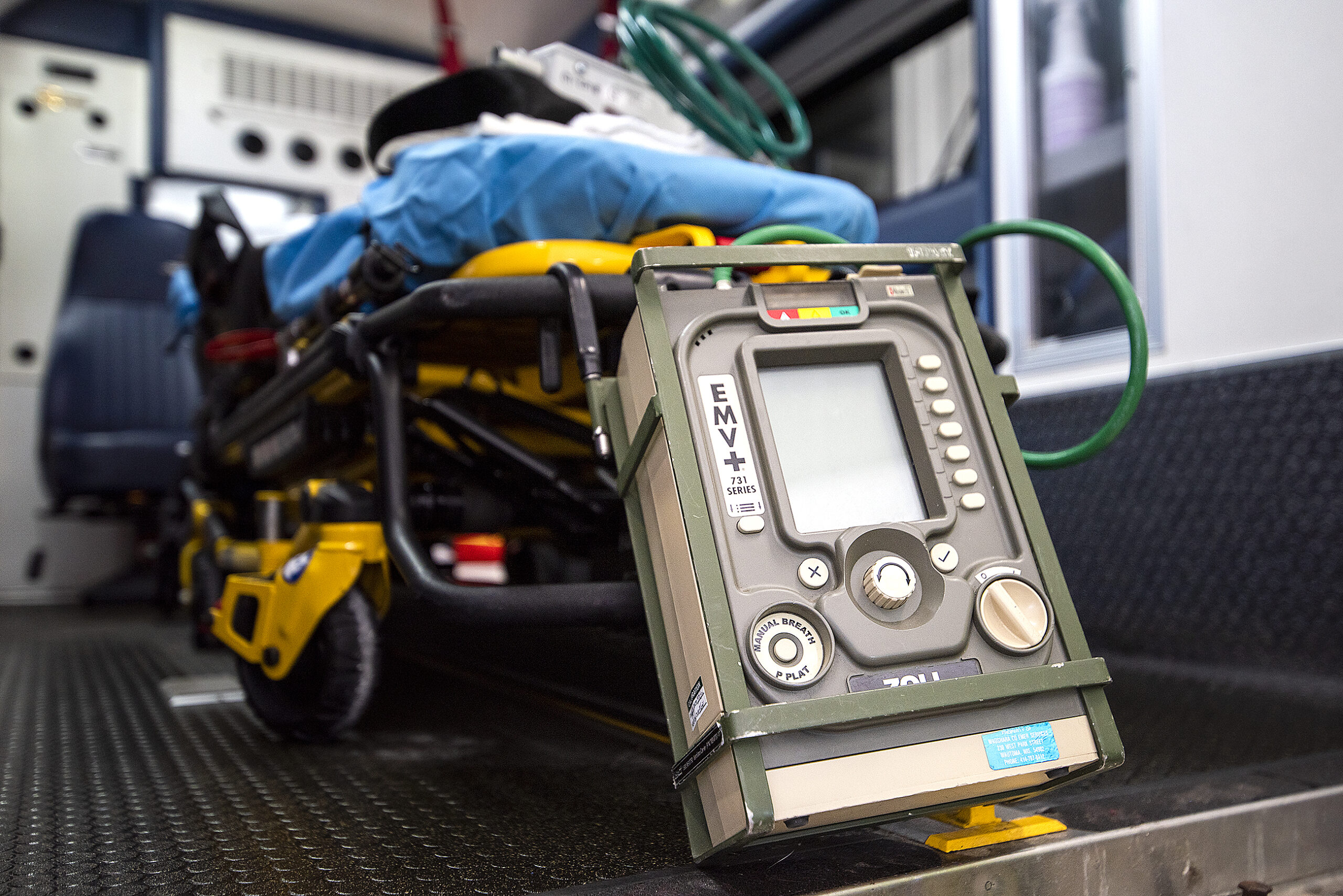
Volunteer First Responders Are Essential, And Hard To Come By
A 2013 survey of state emergency medical service providers found more than half of agencies that responded were run by volunteers. Around 92 percent of Wisconsin fire departments are also staffed by volunteers.
When communities lose an EMS provider, it often creates a strain on surrounding services that are called to respond like Mellen Fire & Rescue. Fire Chief Tony Huber said they’re not able to answer every call from towns that currently lack service because the department is run by a small staff of roughly a dozen volunteers.
He added that job and family commitments make it difficult to attract and retain volunteers, as well as the training requirements and stress that go along with the job.
“There’s no such thing as volunteer anymore. If there’s no money involved, they’re not going to do it, and that’s the problem,” said Huber. “The younger generation does not want to do this stuff. Well, you look up in northern Wisconsin, there’s not a lot of young people sticking around.”
Northern Wisconsin, like other rural areas in the state, has a declining and aging population from which to draw volunteers. Doug Thorp, chairman of the town of Gordon, said the vast majority of the town’s nearly 300 residents are seniors who would be more likely to call 911 than respond.
Surrounding ambulance providers declined to provide emergency services to the town, citing a lack of staff or distance. They would have to travel anywhere from 25 to 45 minutes one way to respond.
“We’re kind of in God’s hands in a way, because we’ve talked with everybody, tried to come up with something and without an ambulance service willing to travel that far … then we’re without one,” said Thorp.
Gordon and other communities organized a meeting last fall with the Ashland Fire Department to see if the city could provide any coverage. Ashland has the closest service with a paid staff of nearly two dozen firefighters, paramedics and emergency medical technicians.
[[{“fid”:”1450241″,”view_mode”:”embed_portrait”,”fields”:{“alt”:”Ashland Fire Chief David Wegener”,”title”:”Ashland Fire Chief”,”class”:”media-element file-embed-portrait media-wysiwyg-align-right”,”data-delta”:”18″,”format”:”embed_portrait”,”alignment”:”right”,”field_image_caption[und][0][value]”:”%3Cp%3EAshland%20Fire%20Chief%20David%20Wegener%20stands%20next%20to%20an%20ambulance%20on%20Feb.%2011%2C%202021.%20He%20said%20they%20have%20to%20balance%20requests%20for%20service%20with%20their%20staffing%20and%20the%20volume%20of%20calls%20they%20receive%3Cem%3E.%20Danielle%20Kaeding%2FWPR%3C%2Fem%3E%3C%2Fp%3E%0A”,”field_image_caption[und][0][format]”:”full_html”,”field_file_image_alt_text[und][0][value]”:”Ashland Fire Chief David Wegener”,”field_file_image_title_text[und][0][value]”:”Ashland Fire Chief”},”type”:”media”,”field_deltas”:{“18”:{“alt”:”Ashland Fire Chief David Wegener”,”title”:”Ashland Fire Chief”,”class”:”media-element file-embed-portrait media-wysiwyg-align-right”,”data-delta”:”18″,”format”:”embed_portrait”,”alignment”:”right”,”field_image_caption[und][0][value]”:”%3Cp%3EAshland%20Fire%20Chief%20David%20Wegener%20stands%20next%20to%20an%20ambulance%20on%20Feb.%2011%2C%202021.%20He%20said%20they%20have%20to%20balance%20requests%20for%20service%20with%20their%20staffing%20and%20the%20volume%20of%20calls%20they%20receive%3Cem%3E.%20Danielle%20Kaeding%2FWPR%3C%2Fem%3E%3C%2Fp%3E%0A”,”field_image_caption[und][0][format]”:”full_html”,”field_file_image_alt_text[und][0][value]”:”Ashland Fire Chief David Wegener”,”field_file_image_title_text[und][0][value]”:”Ashland Fire Chief”}},”link_text”:false,”attributes”:{“alt”:”Ashland Fire Chief David Wegener”,”title”:”Ashland Fire Chief”,”class”:”media-element file-embed-portrait media-wysiwyg-align-right”,”data-delta”:”18″}}]]
Fire Chief David Wegener said they were able to pick up one nearby town — White River. But they have to weigh their staffing with the volume of calls they receive to ensure they can cover their primary service area.
“For us to be sending an ambulance from the city of Ashland to (the) southern part of the county for a 911 call, that’s a long way,” said Wegener. “When you take into account weather conditions on the roads and such, not only does that place the patient at risk, but it places our staff at risk as well.”
In December, the town of Marengo purchased a used ambulance from a nearby community for $30,000 as officials work to set up their own service. The town’s chairman, Stephen Walston, said they were lucky to find enough people willing to volunteer or seek training.
“We have four in school that the township is paying for to get them schooled and certified,” said Walston.
Still, Walston said they’re in need of emergency medical technicians. The capability of many rural ambulance services to respond relies on training and continuing education that can be costly. An EMT must complete an initial 180 hours of course work in Wisconsin that can cost more than $800. Volunteers must also pass the National Registry of Emergency Medical Technicians exam to be licensed or certified in the state.
Mellen’s Huber said some willing volunteers have completed the course work, but they’ve had difficulty passing the national exam. Huber and Gordon’s Thorp think the state should consider easing that testing requirement.
“Would you rather have someone that didn’t pass the National Registry tests or no one at all show up?” said Thorp.
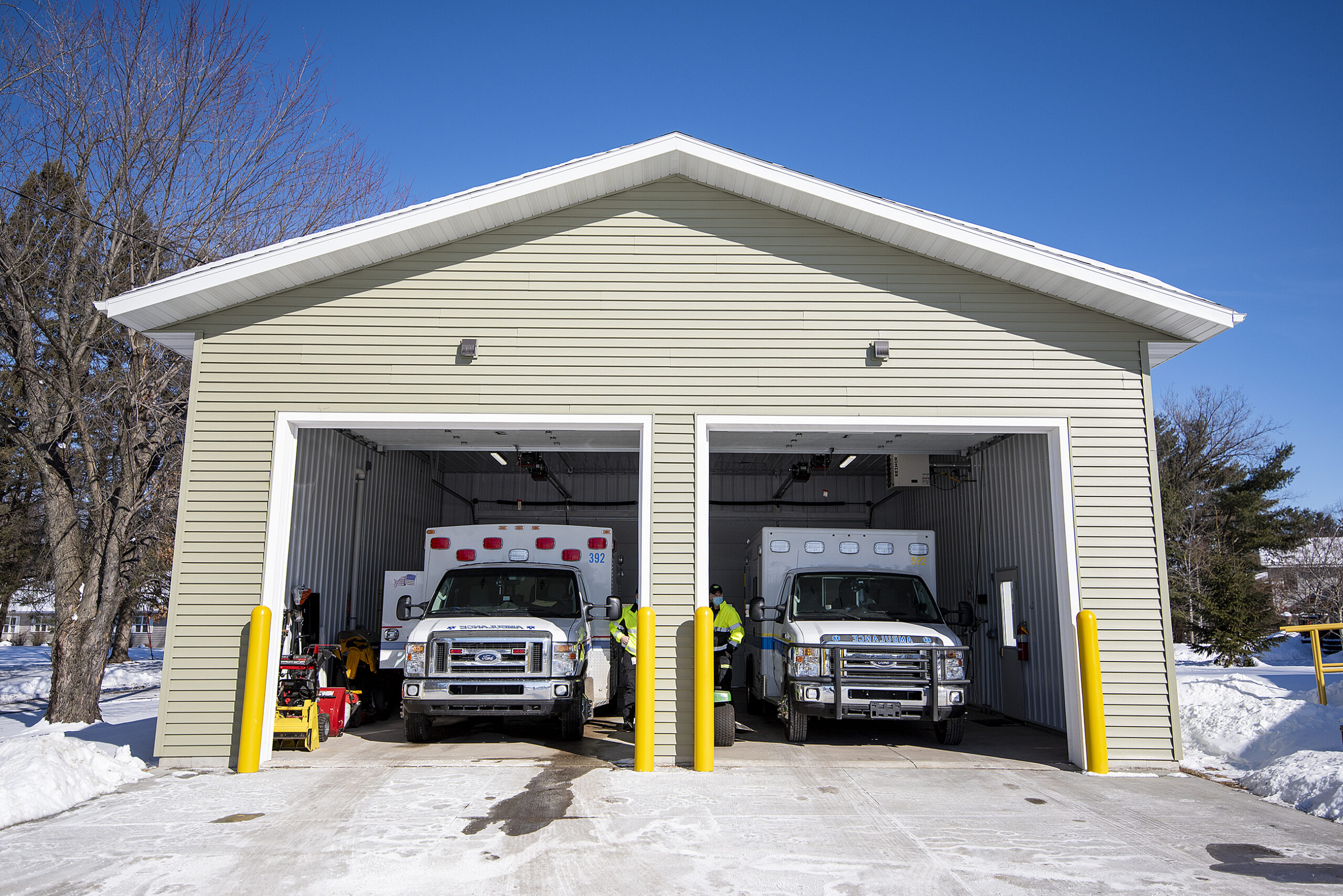
Lawmakers Look To Legislative Solutions
Republican lawmakers like Rep. Travis Tranel and Sen. Howard Marklein, who co-chairs the Legislature’s budget committee, recently reintroduced legislation that would end a requirement for first responders to take the exam, although it wouldn’t apply to those with a higher level of training like EMTs. Marklein and Tranel declined to comment on the bills at this time.
Sen. Patrick Testin, R-Stevens Point, co-authored legislation last year that mirrors the package of proposals, which seek to address EMS testing, staffing and funding. He said he thinks multiple approaches are necessary to attract and retain volunteers.
“Trying to remove some of these hurdles of entry, help with equipment costs, and then also continue to take a look at tax incentives as a way to incentivize individuals to stay within these professions,” said Testin.
But health experts fear proposals like easing certification requirements pits the need for volunteers against patient care.
“People are only doing this because they’re feeling desperate … This is why we need to address this with more serious solutions,” said John Eich, director of the Wisconsin Office of Rural Health. “We can’t just say, ‘Well, let’s make the test easier to take or let’s lower the amount of continuing education that’s needed or let’s pay for their specialty equipment that they need.’”
Eich and others feel EMS should be considered an essential service that pays staff to respond rather than relying on altruism. State EMS Medical Director Dr. Riccardo Colella said he thinks the service needs to be treated like other professions.
“There’s a strong volunteer pride and spirit, and I never want to take any light away from that, but I think what would help that service the most is to pay them for the work that they’re doing for our communities,” said Colella. “Just like police officers and just like teachers, we should pay for that service.”
Yet the concept of transitioning to a paid workforce has not been met with open arms among volunteer firefighters and EMS personnel, according to Brian Donaldson, president of the Wisconsin EMS Association. They don’t want to see helping their friends and neighbors turn into a business. But Donaldson said the industry is becoming more reliant on career services because volunteers don’t exist.
Over the last several decades, EMS service has also evolved from transporting patients to hospitals to administering life-saving care that communities need and expect.
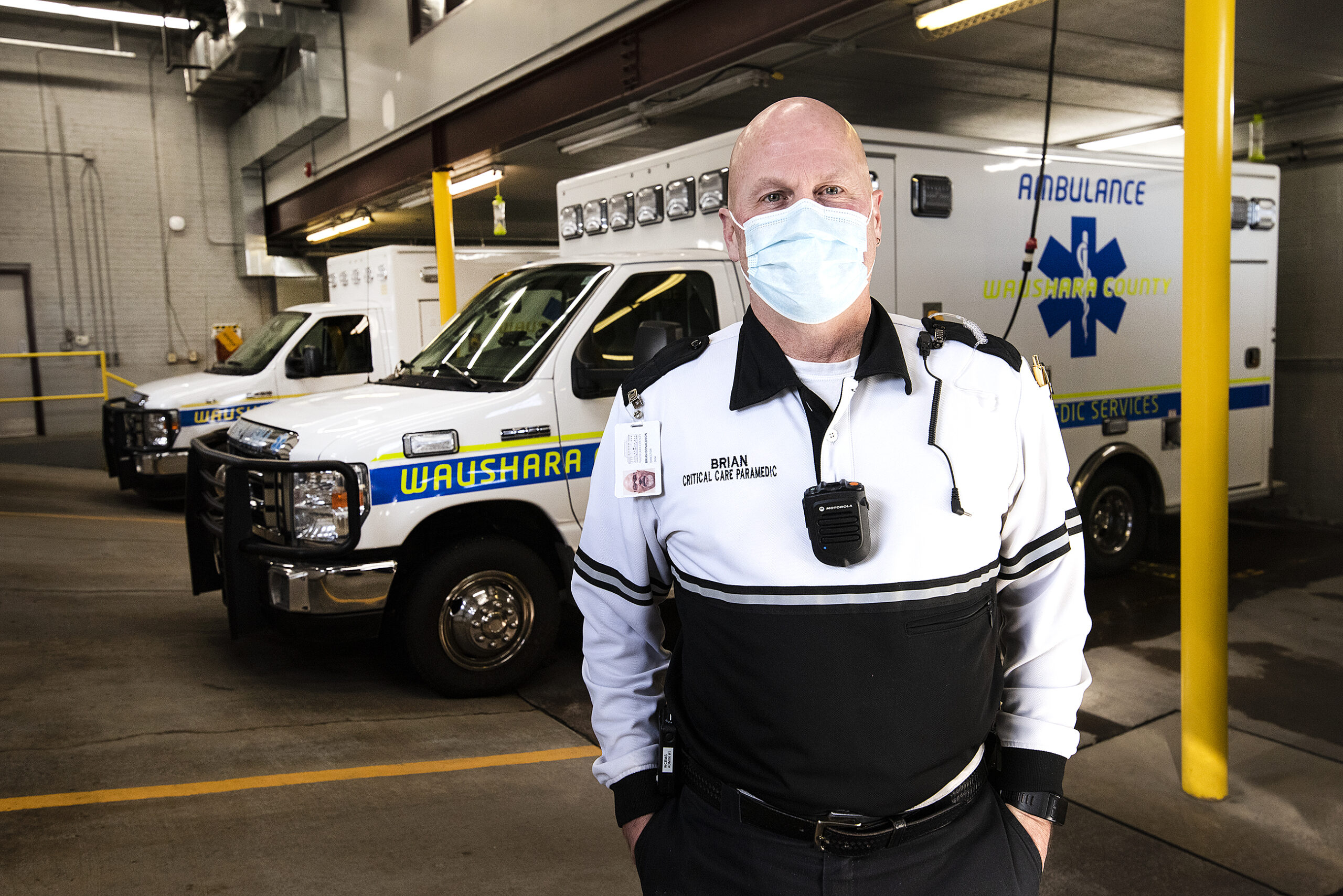
“It’s become very technical, very advanced, even in the rural areas, and probably most importantly, in the rural areas because we need to work with our hospital partners to move their patients to the tertiary centers where they can receive definitive care,” said Donaldson. “Sometimes we’re dealing with some really, really sick or injured patients that we need to move an hour or 90 minutes or two hours or longer away.”
Research has found that 30 percent of rural patients who were fatally injured in a car crash arrived at a hospital more than an hour later. That first hour after a traumatic injury is considered by some the “golden hour” when patients are most likely to benefit from life-saving care.
Donaldson, who oversees a countywide EMS service in Waushara County, thinks a sustainable emergency services model will rely on some form of consolidation, regionalization or partnerships among ambulance agencies. He said it’s too expensive for every community to have their own service, noting the cost of an ambulance alone can run more than $100,000.
While Marengo got a deal on its ambulance, the town still expects to spend thousands to stock it with equipment to respond even though the community averages fewer than 30 emergency calls each year.
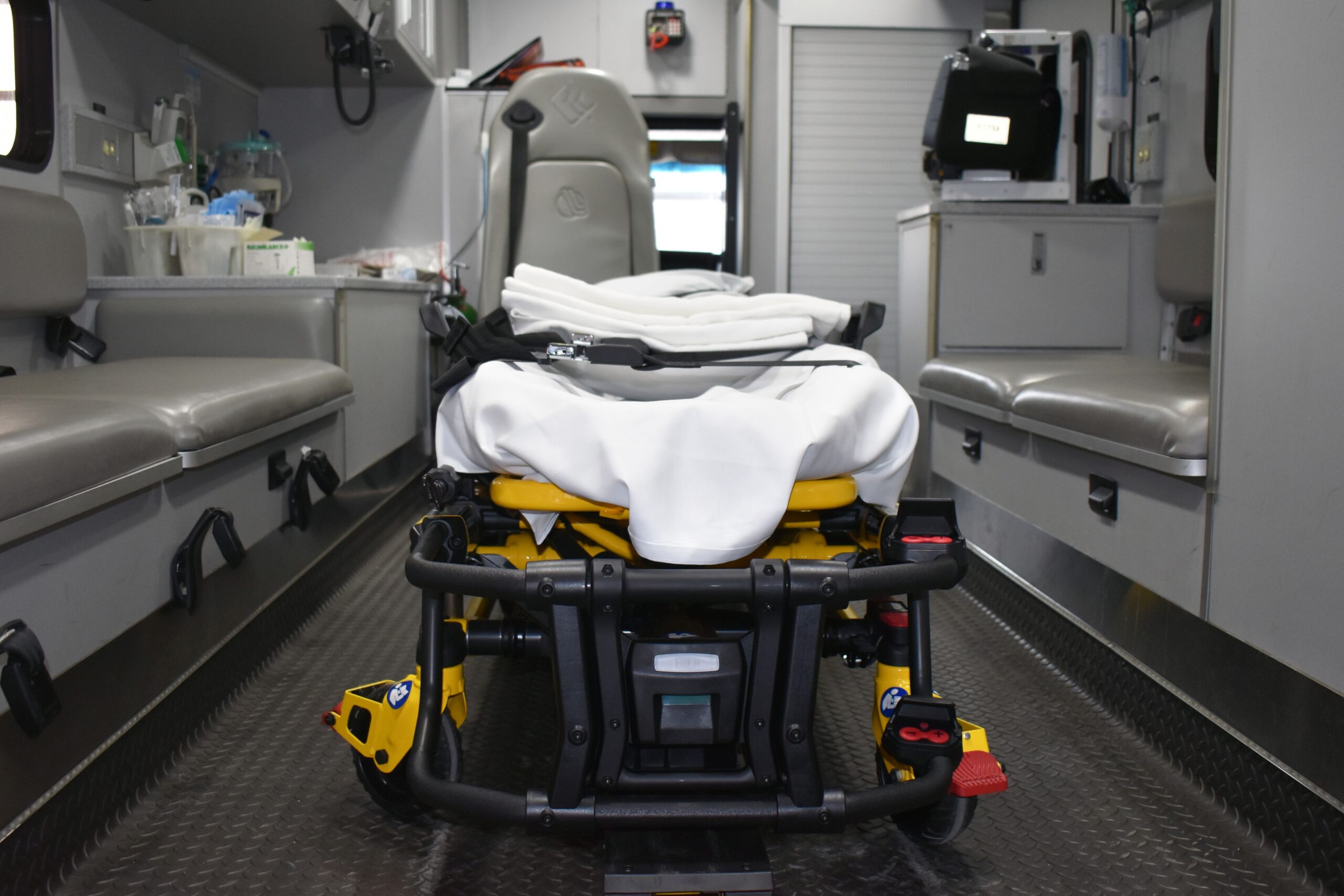
Rural communities with such a low volume of calls typically face more financial burden than their urban counterparts, according to a recent report from the Rural Policy Research Institute at the University of Iowa.
EMS services are often funded through a mix of public or private insurance payments, as well as other sources like tax revenue from local governments. Ambulance service providers may be unable to recoup their costs from people who lack insurance or insurers who refuse to pay. State and federal programs like Medicaid and Medicare also don’t provide enough reimbursement to cover their costs, according to the RUPRI report.
Mike Koles, executive director of the Wisconsin Towns Association, would like the state to provide communities with more flexibility regarding levy limits to support EMS service. Since 2006, the state has restricted the amount of money local governments can raise through property taxes.
But Koles noted that wouldn’t solve the problem for Marengo, Gordon and Shanagolden because they don’t have the same capacity as larger communities to raise revenue through their tax base.
“There is going to need to be more state assistance provided to these communities,” said Koles.
He said that could include increasing shared revenue funding or capturing more money through Medicaid and Medicare reimbursement rates. Koles also suggested developing a funding stream similar to sparsity aid, which provides additional aid to the state’s rural, sparsely populated school districts.
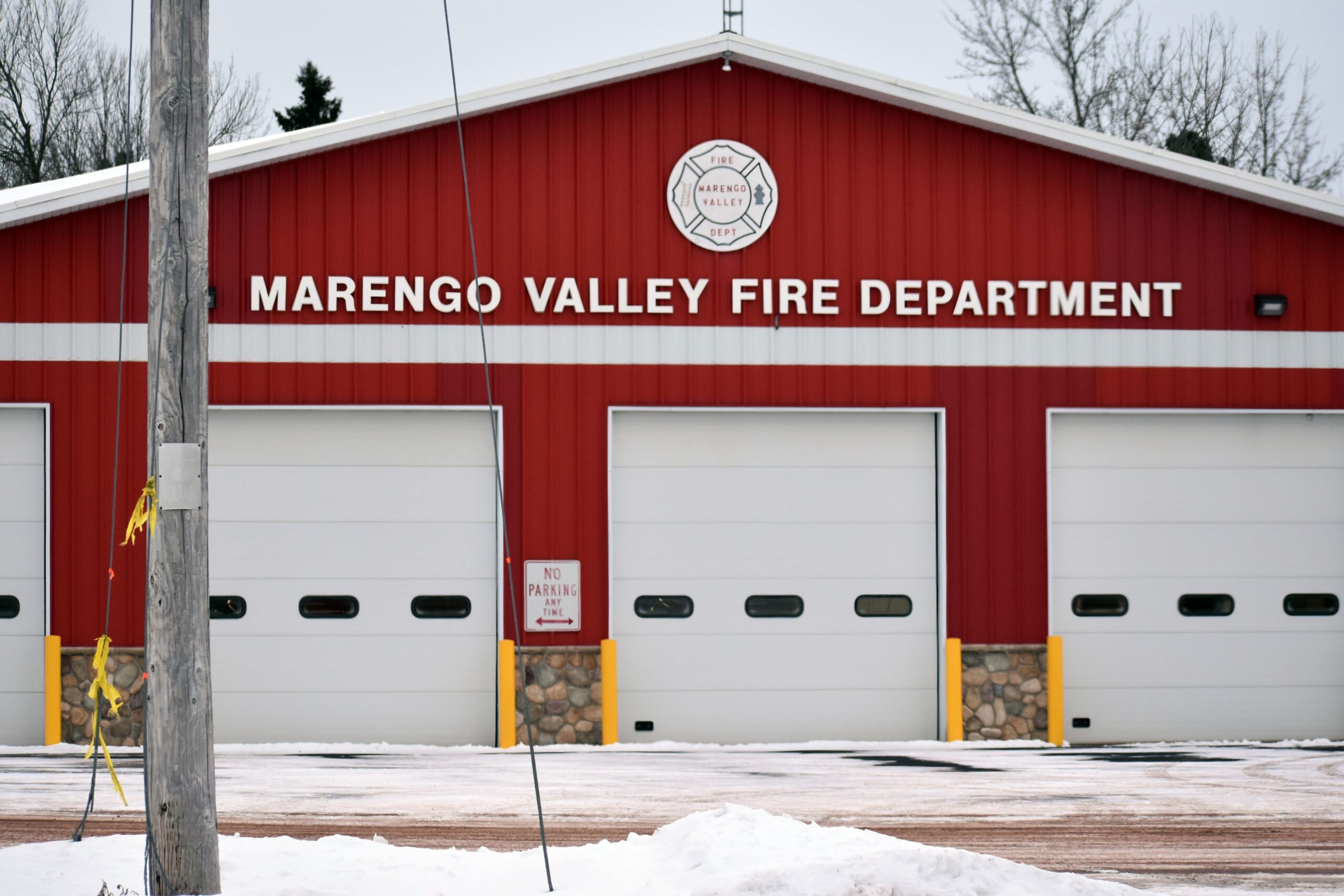
In recent years, lawmakers have studied the state’s EMS challenges, including Senate Minority Leader Janet Bewley, D-Mason. The towns who lost their service reside within her district, and she’s been speaking with them and others about potential legislative solutions.
Bewley said she thinks the proposal to change certification requirements is worth examining. But, she added that the bills under consideration, which would also change ambulance staffing or ease equipment requirements, don’t go far enough.
“They’re mostly patching together a way to sort of deal with what you’ve got,” said Bewley.
For those several towns, that currently means nothing at all. At a bare minimum, Bewley said people should expect a response when they call 911.
While Clam Lake is a good place to social distance, Rubeck is also worried about not having a service in place while the COVID-19 virus remains a risk. He noted several residents have already contracted the disease.
“With everything that’s going on, I just think it’s important that we get this figured out,” he said.
Wisconsin Public Radio, © Copyright 2026, Board of Regents of the University of Wisconsin System and Wisconsin Educational Communications Board.
